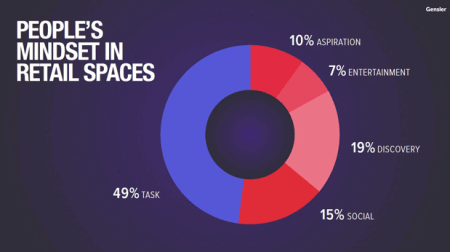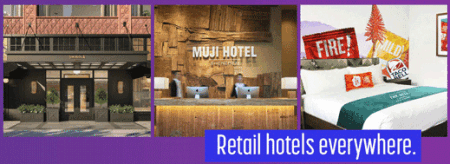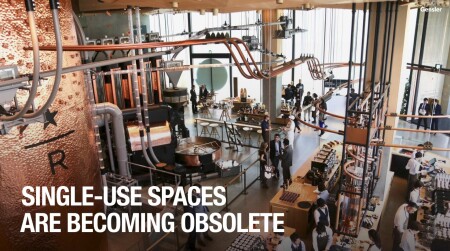In a discussion of the ongoing transformation of U.S. retail, panelists participating in the 2020 ULI Spring Meeting Webinar Series agreed that the authenticity, differentiation, and transparency creating a sense of place in mixed-use retail spaces are likely to be what consumers seek in the future. Single-use spaces are about convenience, but that is only half of what consumers say they are looking for.
Lara Marrero, a principal and retail leader with Gensler based in London, said that with so much of the consumer experience being digital and mobile, “There is a new standard for efficiency, and time is our most valuable commodity.” Marrero said that 49 percent of consumers’ mind-set is task oriented—namely, picking up an item, paying, generally transacting. She was joined in the discussion by Bryan Koop, an executive vice president for the Boston region at Boston Properties, and moderator David Glover, a principal with Gensler and retail leader in the firm’s Los Angeles office.
This webinar is available on Knowledge Finder as part of the 2020 ULI Spring Meeting Webinar Series.
The other 51 percent of consumers’ mind-set is divided into other goals such as socializing or entertainment, plus a full 19 percent focused on discovery (e.g., sampling new things, trying on items, or learning something new).
“Once they get through ‘task mode,’ they are more open to participate,” said Marrero. She also said that technology matters, but it is not about having screens all over the store, but about customer service, citing a PwC study that said that 75 percent of consumers want more human interactions in a space, not less.
Marrero said that brands are creating scarcity with limited editions, but also collaborations where you see something different, such as a hotel brand extension for Shinola or Taco Bell. Single-use spaces are evolving into more multi use, whether it’s a coffee shop or event space inside a retailer or a gym that also sells apparel and equipment. Brands are also owning more of a direct customer relationship, such as a Nike website, storefront, or event instead of distribution through big-box retail.
Marrero also said that 77 percent of the youngest retail segment, generation Z, said in an Accenture survey that they prefer shopping in physical stores.
Bryan Koop, an executive vice president for the Boston region at Boston Properties, spoke specifically to Boston’s Prudential Center, where most of the retail and office space is still in the process of planning to reopen, but there is a community spirit where the stakeholders are concerned for each other.
“Our [office tenants] are saying, ‘Let’s make sure that we’re helping Eataly. Let’s make sure we’re helping Earls. When is Blue Bottle going to open?’” said Koop, referring to specialty food service providers that have largely shifted to delivery or takeout during Boston’s shutdown with reduced staffing. “I’ve never seen that connection and caring about the community in mixed use. “
Koop said that they are considering temperature checks and other measures to ensure that people feel safe coming into the space. However, he also said that some restaurants would rather remain closed than partially reopen with masks and other measures, while others are fine with reopening in some fashion.
“Our industry likes to point in one direction, and we know that’s not the case whether it’s urban versus suburban office or retail,” he said. “Human beings are social creatures, and there’s certainly going to be a desire to get together, so that gathering will be even more powerful in the future.”
Brand hygiene is going to be important, Marrero said. “If people know you are taking care of both your people and your visitors by explaining what you are doing, that transparency yields trust.”
Marrero said that gen Z is also more interested in environmental impact, so some retailers are focusing on selling upcycled or used items that help reduce the amount that goes to landfills each year.
Bicycle repair shops are another example of where going upscale, creating community, and providing a service is working for retailers, said Marrero, which also may have renewed interest in an age of social distancing and health. The brand Rapha, she said, is about “brand belonging, it’s not just about looking at the store.”
Said Marrero, “It’s about bringing enthusiasts to a place where they can begin and end rides together. Get a coffee, get a bike repair.” She also said that she saw a line at a bike store near where she lives in London, so people are still going there.
Marrero acknowledged that some of the older retail concepts will likely not survive the downturn or will need to be scaled back, so hacks and mashups will lead to experimentation and new successes.








